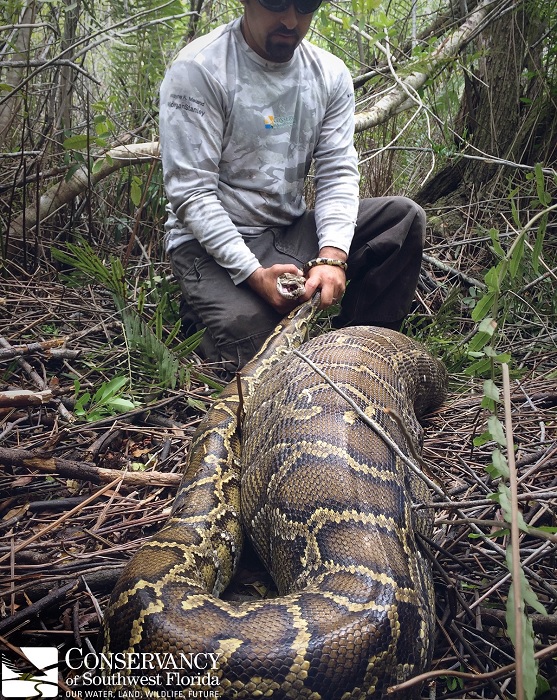Invasive Burmese Python Pays ‘Deerly’ for Swallowing Meal Bigger Than Itself
OutdoorHub Reporters 03.05.18

A chilling discovery has been made by Florida Wildlife officials, which suggests Burmese pythons might just be taking over the entire state.
Okay, maybe that’s a small exaggeration, but wait until you hear what these snakes are trying to swallow these days, and why officials worry it could soon affect the state’s panther population.
According to the Conservancy of Southwest Florida, it’s believed to be the “largest predator/prey ratio ever documented for the Burmese python – and quite possibly for any species of python.”

The find was made back in 2015, when wildlife biologists discovered a female Burmese python with an abnormally large food bulge in its stomach. Once the snake was caught and moved to a more open area, the snake unveiled what it had attempted to take down: a whitetail deer fawn.
Now, you might not be shocked by this snake’s meal choice, (who doesn’t love venison?) but it’s the size of the meal that has scientist’s heads spinning like a top.

When both animals could be weighed, the fawn’s mass was found to be 111.1 percent of the python’s body mass . . . One hundred. Eleven. Percent.
In short, these snakes aren’t wasting anytime to check the size of their prey to see if it will all fit. No, they’re taking more of a ‘eat and hope’ type approach, and that’s possibly the scariest thing we’ve heard in a long time.
What’s to stop these giant, seemingly gutless snakes? Well, the answer is quite gloom.
See, some studies have shown the invasive Burmese python is already responsible for 90 percent of the decline in small mammal populations in the eastern Everglades, Conservancy of Southwest Florida states in a blog post. If that trend continues, and these snakes keep gorging themselves with meals bigger than themselves, that could spell serious trouble for the Florida panther population.
But still, Conservancy of Southwest Florida President and CEO Rob Moher remains optimistic:
“We are learning valuable information that is helping us push back against this invasive species that is significantly and negatively impacting our native wildlife.“
(Be sure to turn up the volume in the Facebook video below.)

